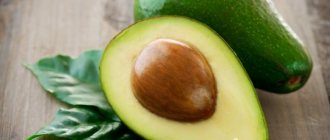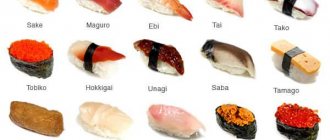Home/Shelf life/Red caviar
Red caviar contains a large amount of fish oil and biochemical enzymes, and the shell of each kernel is not particularly durable. Therefore, the salmon product has a short shelf life. There are standards that regulate the conditions for the production, storage and sale of granular caviar. Regulatory acts establish acceptable storage containers, optimal temperatures, terms, and the procedure for compliance with sanitary standards. Compliance with all the rules directly affects the properties of the finished red caviar. And the topic of quality of salmon products is relevant among consumers.
Normative base
There is an established standard that applies to granular caviar of salmonids - GOST 31794. It includes a number of regulatory references, the requirements of which relate to the technical conditions of raw and food products, oil, containers, transportation, labeling, packaging and storage.
Attention! If you have any questions, you can chat for free with a lawyer at the bottom of the screen or call Moscow; Saint Petersburg; Free call for all of Russia.
Specifications
Red caviar must meet generally accepted quality standards (see Table 1). The product is manufactured according to technical instructions without fail.
Table 1. Established norms for first and second grades.
| Sign | Description | Possible deviations |
| Appearance | Grains are uniform in color, whole, without blood clots | Uneven color and slightly weakened shell |
| Taste | Corresponding to the taste of red caviar, without extraneous flavors | Unobtrusive bitterness and pungency |
| Smell | Pleasant, no foreign odors | |
| Consistency | Elastic, selected eggs, with a slightly moist or dry shell | Weak, viscous structure |
| Salt, % | 3-5 | |
| Impurities | None | |
| Maximum proportion of sorbic acid, % | 0,2 |
During the production of granular products, all rules of the established safety regulations must be observed.
For your information
Acceptance of the product must be carried out in accordance with GOST 7631.
Transportation and storage
Transportation of red caviar is carried out in accordance with established rules for the transportation of perishable products, depending on the type of transport (water or land). The storage temperature should be a minimum of minus 6 and a maximum of minus 4.
Granular caviar sent to the regions of the Far North is regulated by GOST 15846. Packaging is carried out in accordance with the following standards:
- GOST 23285.
- GOST 26663.
- GOST 24597.
Regulatory documents indicate the main sizes of packages.
The salmon product is stored in the following containers:
- barrels;
- buckets;
- container.
Attention
Temperature: -6 to -4. Maximum shelf life of red caviar: 8 months.
Rules
Quality is regulated by the state through standards:
- GOST 18173-2004 “Granular salmon caviar in jars. Technical Specifications" contains labeling requirements: goods with the word "ICRA" are sold domestically, "C" is for import, has an indication of the type of fish, and lists organoleptic, chemical, and physical indicators.
- GOST 55486-2013 “Sturgeon caviar” contains requirements for the appearance, taste, smell, consistency, and composition of canned black caviar.
- GOST 20352-2012 “Salted delicacy. Technical specifications" includes assortment numbers of various types.
- GOST 1629-2015 “Grained salmon in transport packaging”.
- GOST 33430-2015 “Canned fish caviar and milt. Technical specifications" describes the varieties and composition of canned caviar.
- GOST 31793-2012 “Frozen granular salmon caviar” provides requirements for freezing temperature and the quality of thawed goods.
- GOST 32003-2012 “Sturgeon caviar. Technical conditions".
- GOST 7368-2013 “Pressed caviar of sturgeon fish”.
How to maximize the shelf life of caviar?
The shelf life of red caviar largely depends on how it was obtained and prepared. All operations for the production and storage of the product must be carried out strictly according to established standards. The quality of eggs is influenced by the following factors:
- Maintaining optimal temperature during storage.
- Processing of products immediately after extraction (disinfection, preservation).
- Maintaining sanitary conditions throughout the entire process of processing and storing red caviar.
To extend the shelf life of a product at home after opening it, just follow five steps:
- Scald the salmon-like grains with water, which must first be salted.
- Transfer the product into a glass container.
- Drizzle the kernels with a little olive oil.
- Cover the container with cling film. A lid, especially one made of plastic, will not work here.
- Place the delicacy in a cool, dark place.
Please note:
When transferring the delicacy to another container, you must act extremely carefully. The eggs are fragile and can be damaged. If the integrity of the grains is compromised, the shelf life cannot be maximized.
How long does red caviar last in a tin?
Tin cans contain pasteurized or canned caviar. This means that there are preservatives added to the product. Store this delicacy on the refrigerator shelf. Optimal temperature: from +3 to -3 degrees. Shelf life: no more than 12 months.
Attention
Once the tin is opened, the grainy kernels will begin to rapidly deteriorate. Therefore, it is necessary to immediately apply measures to extend the shelf life of red caviar. First of all, transfer the delicacy into a glass container.
Temperature
At what temperature should caviar be stored? Caviar can only be stored at low temperatures, that is, exclusively in the refrigerator. According to GOSTs, both types of caviar should be stored at a temperature from –2 to –6°C.
These indicators should be taken into account when storing the product at home. Another condition is that the temperature must be constant .
Transitions through the zero mark are especially dangerous for caviar, when the caviar is either frozen or thawed.
In plastic
If all conditions are met, the delicacy in sealed plastic will be stored for about 6 months, and after opening up to 4 weeks. Processing a container of red caviar includes the following steps:
- The container is thoroughly washed and rinsed thoroughly so that no particles of detergent remain. Whenever possible, avoid using dishwashing chemicals.
- Plastic containers are immersed in boiled saline solution for 5-7 minutes. Ratio for liquid: 4 tablespoons of salt per 1 liter of boiling water.
- The containers are thoroughly dried.
- The inner surface of the container is lubricated with vegetable oil.
Additional information
When packaging delicacies, you need to ensure that the minimum amount of air entering the contents of the container. To do this, the eggs are placed tightly to each other, leaving no empty space.
Marking
For tin cans it is produced according to a principle similar to other canned food. At the bottom there are two or three rows of convex symbols:
Dear readers! To solve your problem right now, get a free consultation
— contact the lawyer on duty in the online chat on the right or call: +7 (499) 938 6124 — Moscow and region.
+7 (812) 425 6761 — St. Petersburg and region. 8 (800) 350 8362 - Other regions of the Russian Federation You will not need to waste your time and nerves
- an experienced lawyer will solve all your problems!
- the first row contains information about the date of manufacture: 02102018, the expiration date is indicated on the label;
- the second is the word “caviar”;
- the third is the letter P, which means the fishing industry, grade.
For example, 250817 CAVIAR P1 means that it was produced on 08/25/2017 and belongs to the first grade.
On glass and plastic containers, similar information is contained on the lid or label. You can also find out the composition. There, the manufacturer is obliged to indicate all additives and preservatives that were used during preparation.
How long does red caviar last in the refrigerator?
To ensure that the delicacy pleases you with its pleasant taste for as long as possible while in the refrigerator, you should adhere to the following rules for storing red caviar:
- The manufacturer indicates the norms and shelf life on the packaging. The parameters relate to the optimal temperature, shelf life after opening, etc. you should adhere to them.
- You should not keep the product on the refrigerator door, because the temperature is higher there. It is best to place the jars on the shelf closest to the freezer.
- At the bottom of the container with red caviar you can put small pieces of ice, which should be changed daily.
- For longer storage, the jars are wrapped in cling film or foil.
- It is not advisable to frequently open and close containers with caviar. In this case, the eggs are sprinkled with olive oil each time.
Please note:
Canned products are best suited for storage in the refrigerator, since the jar indicates reliable storage times and standards. At the same time, the storage duration does not always correspond to the stated numbers, because much depends on the method of extraction and processing of red caviar.
It is better to purchase salmon grains by weight for consumption within the next 24 hours, because it is not known exactly when it was produced. Of course, you can always try such a product first to ensure its freshness. However, the next day the eggs may begin to deteriorate. However, if you take the product from conscientious sellers and follow all the recommendations for its storage, there will be no problems with the amazing taste of red caviar from the refrigerator.
Choosing the right container for storing loose delicacies
Let's consider which jars and boxes are suitable for long-term storage of the delicacy.
Plastic containers
You can choose plastic jars and boxes with or without a tight lid - in this case, the container is covered with cling film, this storage option is allowed. It is recommended to pay attention to the packaging labeling: some types of plastic are not suitable for heating and freezing. There is also a material that is absolutely not suitable for storing food.
When examining the appearance of the container, pay attention to the PVC icon (PVC-polyvinyl chloride) or the number 3 in the triangle at the bottom of the package - these markers indicate toxicity and unsuitability for storing food.
Food grade plastic is marked with letters:
- PE (PE) - polyethylene;
- PETF (PET) or PET (PET) - polyethylene terephthalate;
- PP (PP) - polypropylene;
- PS (PS) - polystyrene (its code is number 6);
- Safety is confirmed by the image of a plate and fork, as well as the numbers 5 and 1.
How long can red caviar be stored in bulk?
When buying red beans by weight, sellers usually pack the goods in a plastic container. The delicacy will be stored in this type of container for 2-3 days. If you take into account all the recommended conditions for prolonging the freshness of the product, you can consume it within a week. However, it is not known to what extent the standards were observed during the production, transportation and storage of red caviar, which is sold by weight. Therefore, it is better not to take risks and consume the delicacy in the coming days.
Signs indicating an expired product
This product is valued not only for its exquisite taste, but also for the presence of rich nutrients: proteins, fats and microelements. Caviar has great benefits for the body with its ability to increase immunity, strengthen blood vessels and the heart. It also has a beneficial effect on vision and blood circulation.
Spoiled caviar can be immediately recognized even by external signs. Ideally, the product should be glossy, with a transparent shell and a dark spot inside the egg. Spoiled caviar may have a coating on it that makes it more dull. Also, notes of a sharp and unpleasant odor indicate a spoiled product. It is better not to buy caviar on the market, because it has already reacted with oxygen and began to oxidize. Because of this, its taste becomes less pronounced and gives off a bitter aftertaste.
How long does red caviar last in the freezer?
Since the red delicacy is considered a perishable product, it will not be stored in the refrigerator for a long time. Therefore, if you purchase a large stock, it makes sense to freeze it. There are standards for proper freezing. If you do not adhere to them, then after defrosting the delicacy will lose its beneficial, taste and other properties.
Instructions for storing red caviar in the freezer:
- The sealed container is pre-lubricated with a small amount of vegetable oil.
- The kernels are placed in small portions so that there is no need to resort to long-term storage in the refrigerator.
- The eggs should fill the container neatly and evenly.
- The container is stored in a separate compartment, which is rarely opened.
- Freezing bags should be placed in a row, never on top of each other. If the container is damaged or dented, its contents will turn into mush.
Attention
The permissible shelf life of the product in the freezer is 10 months. Recommended containers are plastic cups and freezer bags.
Compound
This product is one of the most popular, exquisite, sought after and healthy delicacies. However, now the quality of some of the proposed types does not justify their expensive price and that is why you should know about the composition, advantages and disadvantages of this product.
Benefit
Caviar contains a huge amount of vitamins, minerals and various elements: sodium, manganese, iodine, phosphorus, calcium, copper, iron, vitamins A, C, E, D, B, folic acid, retinol, protein, polyunsaturated fatty acid. These components can bring many benefits to the body, namely:
- Strengthen bones, nails, hair, skin, tooth enamel.
- Produce and maintain hemoglobin and insulin.
- Improve immunity, endocrine system functioning, vision, concentration, metabolism, blood clotting.
- Stabilize blood pressure, condition of the thyroid gland, nervous system, psychological background, water balance, removal of toxins.
- Reduce blood cholesterol.
- Increases metabolism, which is good for people who are on a diet.
- Prevent stroke, heart attack, cardiac ischemia, atherosclerosis, Alzheimer's disease, eczema, dermatitis, psoriasis.
- Control the hematopoietic system.
- Eliminate lower back pain, toxicosis.
- Prevent the formation of cancer cells, cataracts, pathologies in the stomach, and early aging.
- It has a beneficial effect on the health of older people in the postoperative period.
Harm
Despite the fact that those people who regularly use this product get sick much less often, have strong nails, hair, bones and are more energetic, in rare cases caviar can cause some problems for the body if contraindications are not taken into account:
- due to the salt content in the composition, difficulties with the functioning of the kidneys may begin;
- eating a low-quality delicacy leads to damage to the kidneys, nervous system, liver, eyes;
- overeating can also worsen the condition: provoke anaphylactic shock, cause swelling, and heart failure. Therefore, it is advisable to eat no more than 4-5 teaspoons of caviar;
- with already developed anemia, hypertension, immunodeficiency, thrombophlebitis, varicose veins, hematopoietic dysfunction, and the musculoskeletal system, you should consume only the amount recommended by doctors.
Interesting!
The calorie content of red caviar per 100 grams is 250 kcal.










